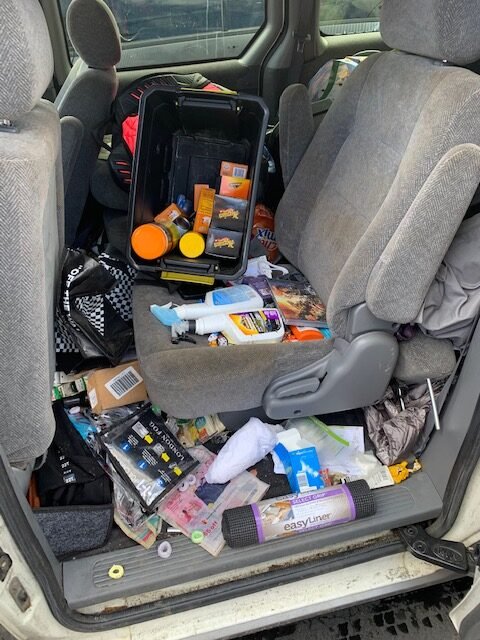The Rising Risk of Illicit Drug Contamination in Recovered Stolen Vehicles
In the past few years, a growing concern has been arising regarding accidental second-hand exposure to illicit drugs, primarily fentanyl and xyzaline. Historically, auto theft often resulted in parts being sold off, but recently, an increasing number of vehicles are being used by thieves for joyriding or as temporary shelter. This is leading to more cases where these cars are found with dangerous substances left behind like fentanyl, xyzaline, and methamphetamine. This poses a significant risk for the car owners and insurance companies responsible for releasing those vehicles back to property owners.
The Danger of Contamination
Fentanyl is an extremely powerful opioid, and its lethality cannot be understated; even a tiny speck can be fatal. This makes the accidental exposure to fentanyl, especially in the context of a recovered stolen vehicle, a matter of grave concern. Alongside fentanyl, xyzaline, a recent addition by drug cartels to enhance fentanyl's effects (known as 'Tranq'), adds to the risk. As xyzaline is not an opioid, naloxone (Narcan) does not reverse its effects. While meth has been around for years and is not as potent or deadly as fentanyl, chronic residual exposure can cause serious health problems. This is why it's important to assess each stolen vehicle for signs of illicit drug use.
Vehicle being assessed for fentanyl after user overdosed.
Auto Insurance Companies Stepping Up
More and more insurance companies are getting wise to this growing problem. Recently, they are starting to bring in professionals to assess recovered vehicles and make sure they're safe before they hand them back to their owners. This move by the insurance companies is comforting that they are taking the proper steps to keep their customers safe. It also gives people peace of mind and cuts down on the insurance company's risk of someone getting hurt from second-hand exposure.
How Vehicles are Tested
Recovered Stollen Vehicle Being Tested for Illicit Drugs
After a vehicle is recovered, it should be assessed for any signs of illicit drug activity by looking for drug paraphernalia or speaking to law enforcement who may have additional insight. If drug paraphernalia is discovered, or it is believed the vehicle may have been contaminated by illicit drugs, the vehicle should be restricted from entry by anyone without proper PPE and training. Surface sampling should then be conducted throughout the cab and trunk in multiple locations, including the HVAC system. If positive results are found, they should be assessed by a professional who can provide guidance on proper cleaning methods, which often include HEPA vacuuming the entire vehicle, spraying neutralizing solution throughout, and may require the removal of all porous materials such as seat fabric, cushions, and headliners. Once remediation is complete, the vehicle should be retested and cleared by a professional for occupancy.
What It Means for Car Owners
For folks getting their stolen cars back, it’s a mixed bag of feelings. Often, the initial joy of recovering their vehicle can quickly be overshadowed by fear of contamination. Taking the steps to assess and test a vehicle not only enhances the occupants' safety but also provides peace of mind.
Wrapping Up
This issue of drug contamination in recovered stolen cars is complex and costly. Taking the steps to properly assess the vehicle is an important first step. For more information on vehicle assessment, Safety Services Management has created online and in-person training courses to address this growing concern.




